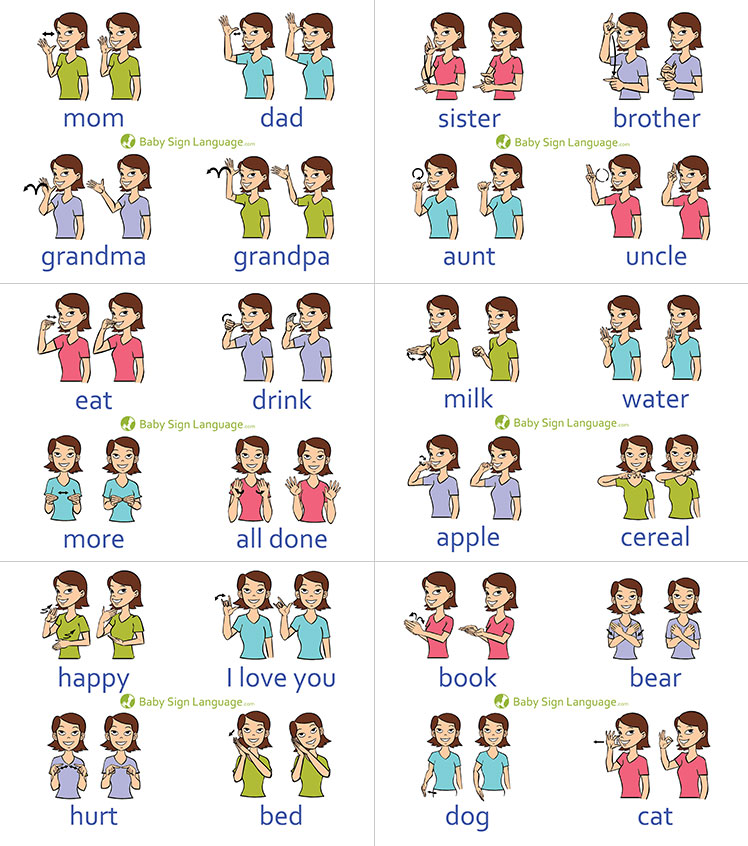
Sign Language for Babies: A Comprehensive Guide to Enhancing Communication and Development
Introduction
In the realm of early childhood development, sign language has emerged as a powerful tool that empowers babies to communicate their needs, thoughts, and emotions even before they can speak. By introducing sign language to infants, parents and caregivers can foster a deeper connection, enhance cognitive abilities, and lay the foundation for future language acquisition. This comprehensive guide delves into the benefits, techniques, and practical applications of sign language for babies, providing parents and educators with a roadmap to unlock the potential of this extraordinary communication method.
Benefits of Sign Language for Babies
The introduction of sign language to babies offers a myriad of benefits that extend beyond communication. These include:
-
Enhanced Communication: Sign language provides babies with a means to express themselves before they can verbally articulate their thoughts and needs. This reduces frustration and fosters a sense of empowerment.
-
Cognitive Development: Studies have shown that babies exposed to sign language exhibit improved cognitive abilities, including problem-solving, memory, and spatial reasoning.
-
Language Acquisition: Sign language serves as a bridge to spoken language, facilitating the development of vocabulary, grammar, and comprehension skills.
-
Parent-Child Bonding: The act of signing with babies creates a unique and intimate bond, strengthening the parent-child relationship.
-
Social Development: Sign language promotes social interaction and cooperation, as babies learn to communicate with others in a non-verbal manner.
Techniques for Teaching Sign Language to Babies
Introducing sign language to babies is a gradual process that requires patience and consistency. Here are some effective techniques:
-
Start Early: Begin signing with babies as early as 6-9 months of age, when they are receptive to new forms of communication.
-
Use Simple Signs: Focus on teaching basic signs that are easy for babies to remember and execute, such as "eat," "drink," "more," and "all done."
-
Incorporate Signs into Daily Routines: Integrate signs into everyday activities, such as mealtimes, diaper changes, and playtime.
-
Be Consistent: Use the same signs consistently and avoid switching between different signs for the same concept.
-
Make it Fun: Engage babies in interactive games and songs that incorporate sign language, making the learning process enjoyable.
Practical Applications of Sign Language for Babies
Sign language can be used in a variety of practical situations to enhance communication and foster development:
-
Communicating Needs: Babies can use signs to express their hunger, thirst, discomfort, or desire for attention.
-
Establishing Routines: Signs can help establish daily routines, such as mealtimes, naptime, and bedtime.
-
Reducing Frustration: By providing babies with a way to communicate their needs, sign language can reduce frustration and tantrums.
-
Promoting Independence: Sign language empowers babies to make choices and express their preferences, fostering a sense of independence.
-
Supporting Language Development: Sign language can serve as a stepping stone to spoken language, providing a foundation for vocabulary and grammar.
Tips for Parents and Educators
To maximize the benefits of sign language for babies, parents and educators should consider the following tips:
-
Be Patient: Learning sign language takes time and practice. Be patient with babies and encourage them to explore and experiment with signs.
-
Use Gestures and Facial Expressions: In addition to signs, use gestures and facial expressions to convey meaning and create a more engaging experience.
-
Model Signs: Demonstrate signs clearly and enthusiastically to encourage babies to imitate.
-
Provide Feedback: Respond to babies’ signs with positive reinforcement, such as smiles, praise, or hugs.
-
Seek Professional Support: If you encounter challenges or have specific concerns, consider consulting with a speech-language pathologist or other qualified professional.
Conclusion
Sign language for babies is a transformative communication tool that empowers infants to express themselves, enhances their cognitive development, and fosters a deeper connection with their caregivers. By embracing the techniques and practical applications outlined in this guide, parents and educators can unlock the potential of sign language and provide babies with a solid foundation for future success. Remember, the journey of sign language is a shared experience that enriches the lives of both babies and their loved ones.
